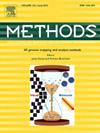联合色度作为肝脏疾病监测中AST和ALT测量的可靠的基于浓度的替代方法的验证
IF 4.3
3区 生物学
Q1 BIOCHEMICAL RESEARCH METHODS
引用次数: 0
摘要
传统的天冬氨酸转氨酶(AST)和丙氨酸转氨酶(ALT)检测方法测量的是酶活性,在长期冷冻储存过程中酶活性会降低,从而影响检测的准确性。相反,组合染色法(CI)是一种定量AST和ALT浓度的荧光免疫分析法,是回顾性和即时肝功能检测的可靠替代方法,不受长期储存的影响。方法收集256例(对照组和肝炎、肝硬化或肝癌患者)的血清样本,在- 80℃平均保存3年。采用CI、7180临床分析仪(HT)和Atellica CH 930采集后立即测定AST和ALT。分析AST、ALT及AST/ALT比值的相关性。随机森林回归(RFR)模型使用CI或HT数据来预测hl衍生的AST/ALT比率。结果sci - ast与HL-AST在各组间均表现出较强的相关性(R2 > 0.95),优于HT-AST (R2 = 0.58)。CI-ALT与HL-ALT中度相关(R2 = 0.87),优于HT-ALT (R2 = 0.71)。由于ALT的可变性,不同方法的AST/ALT比率不同,但使用CI数据的RFR准确预测HL比率(R2 = 0.85-0.91)。亚组分析证实了CI在病因上的优越一致性。结论sci能够独立于活性,可靠地测量AST和ALT,即使在延长储存后,在精度和相关性方面优于酶分析。它的简单性和与机器学习模型的兼容性使CI在临床和资源有限的情况下都成为肝酶诊断的有前途的工具。本文章由计算机程序翻译,如有差异,请以英文原文为准。
Validation of combo ichroma as a reliable concentration-based alternative for AST and ALT measurement in liver disease monitoring
Background
Traditional assays for aspartate aminotransferase (AST) and alanine aminotransferase (ALT) measure enzymatic activity, which degrades during long-term frozen storage, threatening the accuracy of the assay. Instead, Combo ichroma (CI), a fluorescence immunoassay that quantifies AST and ALT concentrations, is a robust alternative for retrospective and point-of-care liver function testing, free from the influence of long-term storage.
Methods
Serum samples from 256 individuals (controls and patients with hepatitis, cirrhosis, or liver cancer) were collected and stored at −80 °C for an average of three years. AST and ALT were measured using CI, the 7180 clinical analyzer (HT), and Atellica CH 930 analyzer performed immediately after collection (HL). Correlations between AST, ALT, and AST/ALT ratios were analyzed. Random Forest Regression (RFR) models using CI or HT data were developed to predict HL-derived AST/ALT ratios.
Results
CI-AST showed strong correlation with HL-AST across all groups (R2 > 0.95), outperforming HT-AST, especially in controls (R2 = 0.58). CI-ALT moderately correlated with HL-ALT (R2 = 0.87), surpassing HT-ALT (R2 = 0.71). AST/ALT ratios varied across methods due to ALT variability, but RFR using CI data accurately predicted HL ratios (R2 = 0.85–0.91). Subgroup analysis confirmed CI’s superior concordance across etiologies.
Conclusions
CI enables activity-independent, reliable measurement of AST and ALT even after extended storage, outperforming enzymatic assays in precision and correlation. Its simplicity, and compatibility with machine learning models position CI as a promising tool for liver enzyme diagnostics in both clinical and resource-limited settings.
求助全文
通过发布文献求助,成功后即可免费获取论文全文。
去求助
来源期刊

Methods
生物-生化研究方法
CiteScore
9.80
自引率
2.10%
发文量
222
审稿时长
11.3 weeks
期刊介绍:
Methods focuses on rapidly developing techniques in the experimental biological and medical sciences.
Each topical issue, organized by a guest editor who is an expert in the area covered, consists solely of invited quality articles by specialist authors, many of them reviews. Issues are devoted to specific technical approaches with emphasis on clear detailed descriptions of protocols that allow them to be reproduced easily. The background information provided enables researchers to understand the principles underlying the methods; other helpful sections include comparisons of alternative methods giving the advantages and disadvantages of particular methods, guidance on avoiding potential pitfalls, and suggestions for troubleshooting.
 求助内容:
求助内容: 应助结果提醒方式:
应助结果提醒方式:


